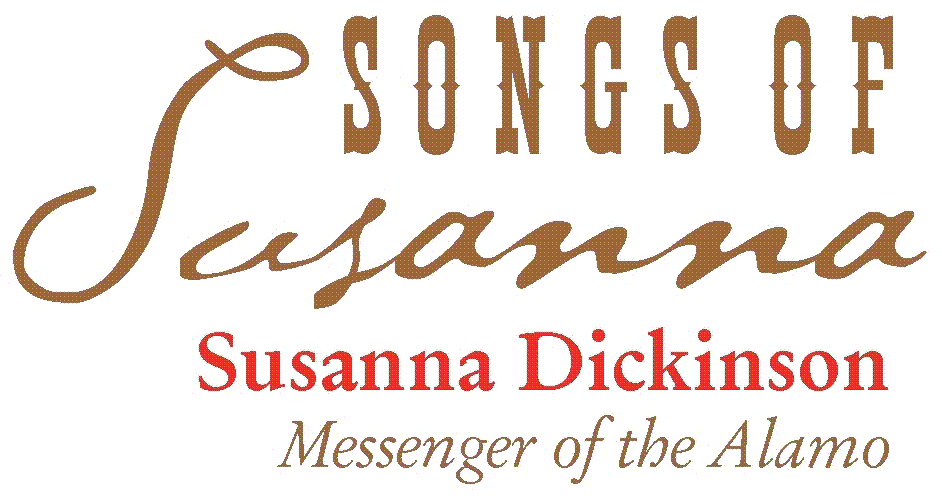
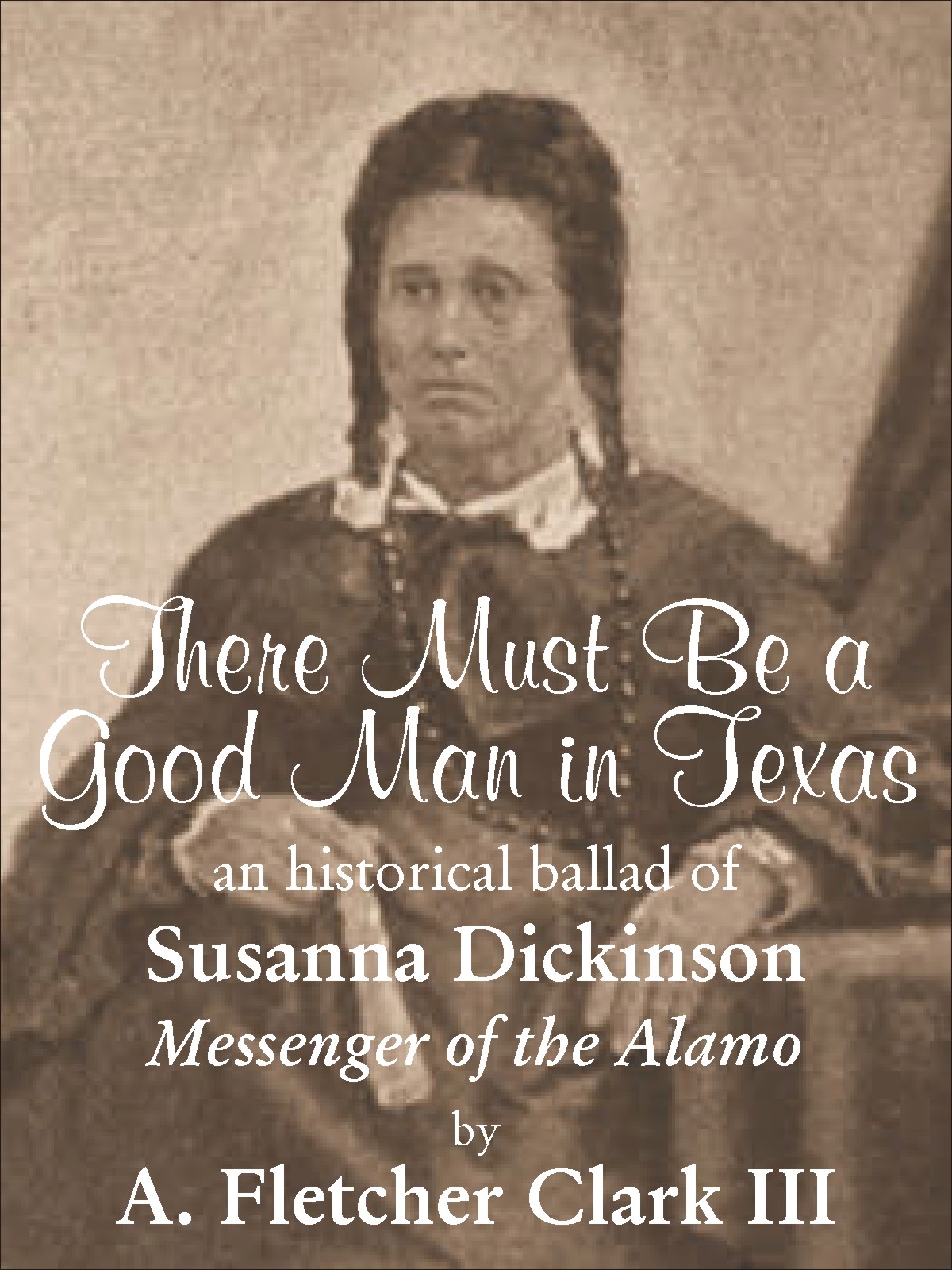
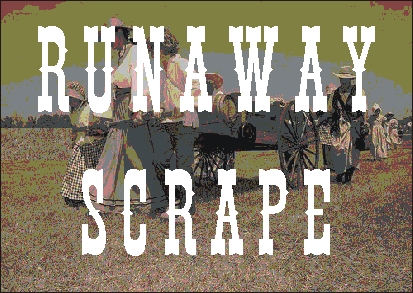 Order the booklet
Order the booklet 
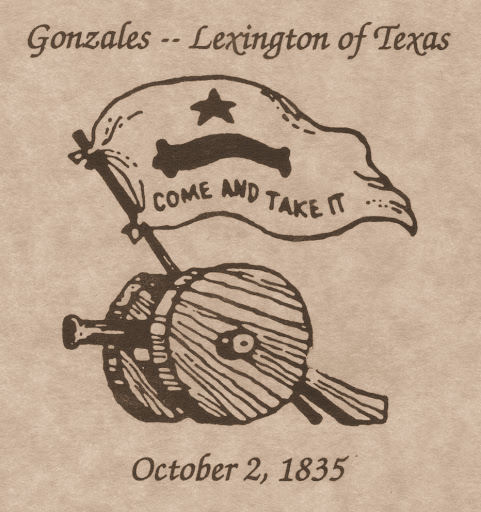
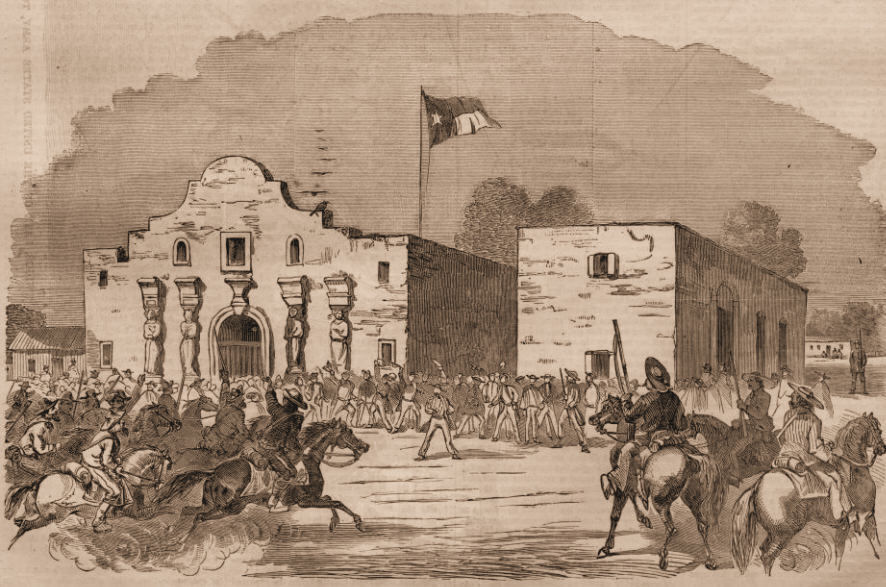
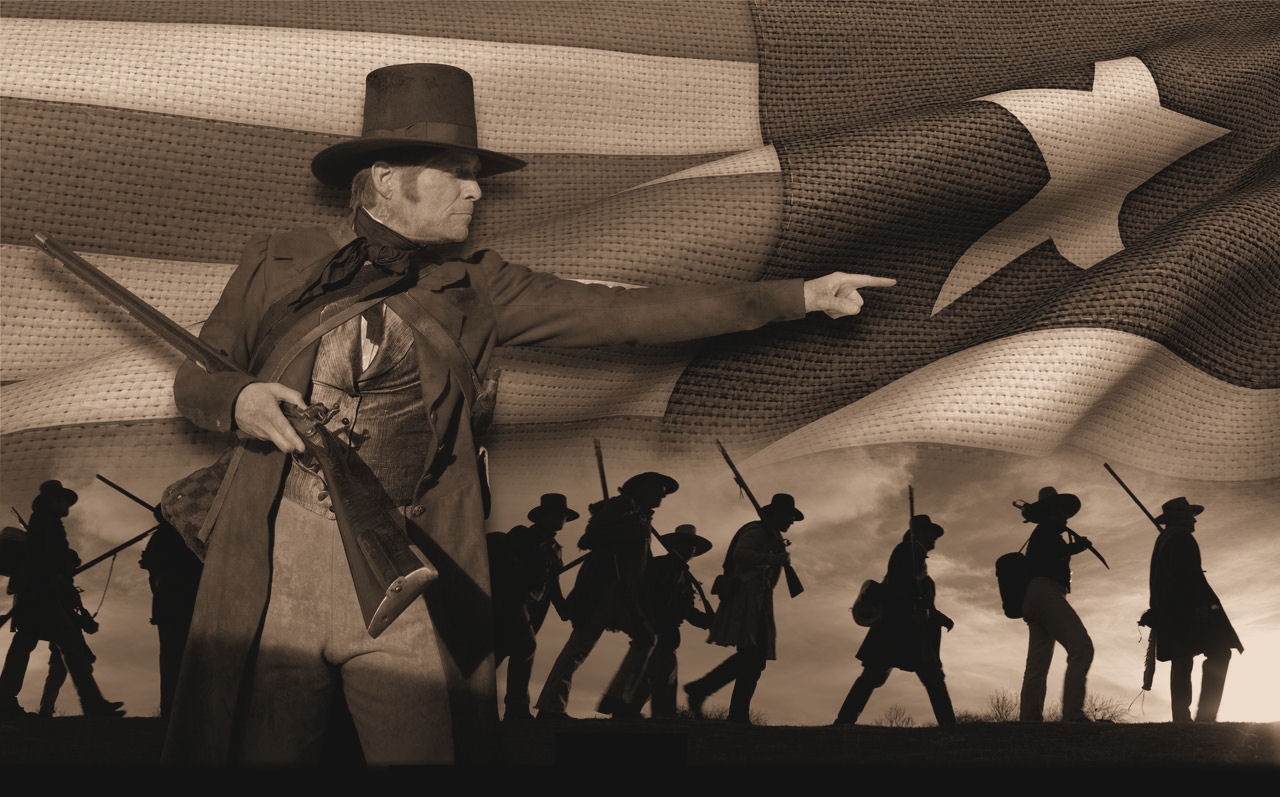
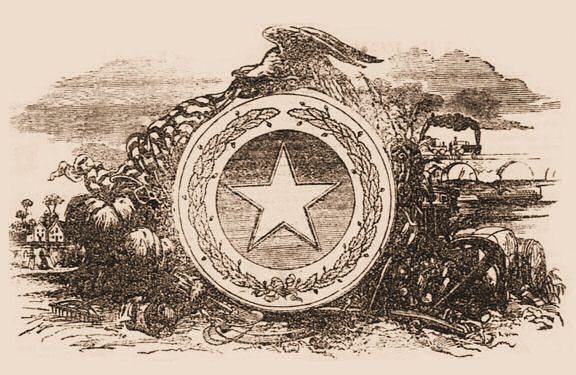
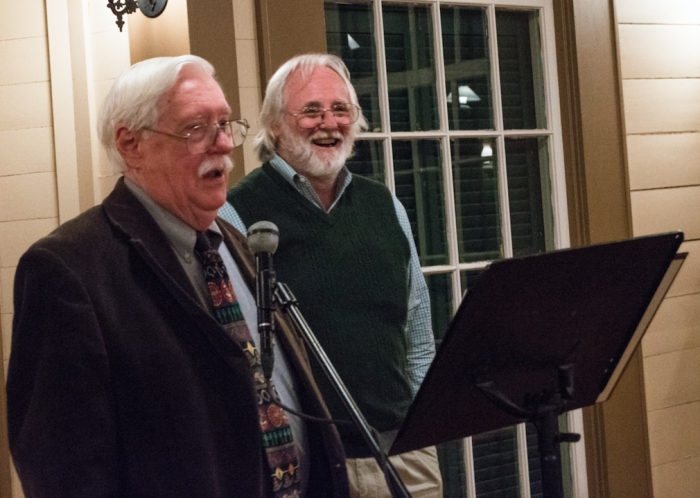
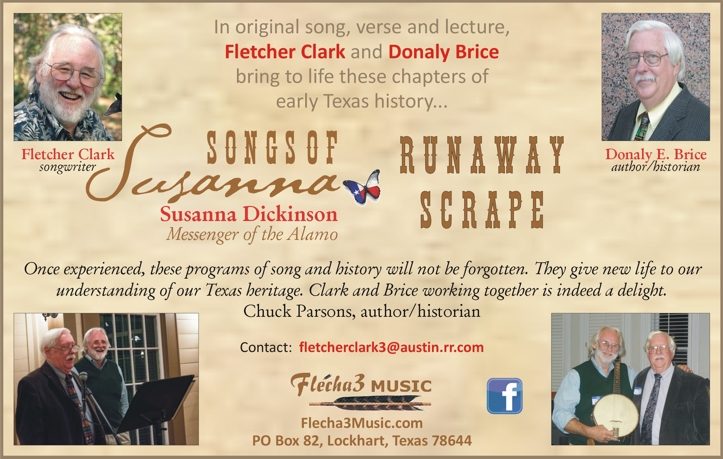 Songs of Susanna EPK (Electronic Press Kit)
Songs of Susanna EPK (Electronic Press Kit)
 Widely known is the name of Susanna Dickinson, Messenger of the Alamo, for she and her infant daughter Angelina, Babe of the Alamo, were the sole Anglo survivors of that bloody conflict. Known also, particularly in Austin, Texas, is the name of Susanna Dickinson Hannig, the wife of Joseph William Hannig. But that's not the whole story – not by a long shot. For even to begin to tell the whole story, you have to know all of who she was:
Susanna (nee Wilkerson) Dickinson Williams
Herring Bellows Hannig
That's right. Five husbands in all.
Like most 15-year-old girls in Hardeman County, Tennessee, Susanna Wilkerson never learned to read or write, simply because schooling had nothing to do with providing for a husband nor raising a family. It was through a husband that her path would lead. Never could young Susanna have imagined how long and bumpy that path would be.
(Songs of Susanna OneSheet)
As a young officer in the Mexican Army under the command of Joaquín de Arredondo with his fierce counterinsurgency policy of mass executions, Generalissimo Santa Anna seems to have formed his policy and conduct in the Texas Revolution. The Tornel Decree had been initially issued by the Mexican government in response to depredations by pirates upon Mexican coastal towns and outposts, but when it became clear that Texian insurgents were intent upon armed response to Mexican military presence, the decree was invoked against them. So Texians who found themselves in a state of rebellion - whether their intent be enforcement of their citizenship and loyalty to their consititutional government or a desire for total independence from Mexico - were soon to realize that Santa Anna intended to show no quarter and spare no measure in his use of the Tornel Decree. As the Mexican Army moved north across the Rio Bravo, citizens became alarmed as early as January of 1836 and as far south as San Patricio, the seat of Stephen Austin's Colony. The English translation of the Tornel Decree was then published in New Orleans and in Texas prior to the Battle of the Alamo and the Battle of Coleto Creek. Civilians had begun their flight toward the imagined safety of the United States beyond the Sabine River, while Houston attempted to form a true Texian army in Gonzales. News of the fall of all at the Alamo spurred him to order the burning of Gonzales. News of the massacre and executions at Goliad and the burning of Bastrop further fed the peoples' fear. Thus, came the fearful civilian flight and the ragged military retreat that we know as the Runaway Scrape.
(Runaway Scrape OneSheet)
Widely known is the name of Susanna Dickinson, Messenger of the Alamo, for she and her infant daughter Angelina, Babe of the Alamo, were the sole Anglo survivors of that bloody conflict. Known also, particularly in Austin, Texas, is the name of Susanna Dickinson Hannig, the wife of Joseph William Hannig. But that's not the whole story – not by a long shot. For even to begin to tell the whole story, you have to know all of who she was:
Susanna (nee Wilkerson) Dickinson Williams
Herring Bellows Hannig
That's right. Five husbands in all.
Like most 15-year-old girls in Hardeman County, Tennessee, Susanna Wilkerson never learned to read or write, simply because schooling had nothing to do with providing for a husband nor raising a family. It was through a husband that her path would lead. Never could young Susanna have imagined how long and bumpy that path would be.
(Songs of Susanna OneSheet)
As a young officer in the Mexican Army under the command of Joaquín de Arredondo with his fierce counterinsurgency policy of mass executions, Generalissimo Santa Anna seems to have formed his policy and conduct in the Texas Revolution. The Tornel Decree had been initially issued by the Mexican government in response to depredations by pirates upon Mexican coastal towns and outposts, but when it became clear that Texian insurgents were intent upon armed response to Mexican military presence, the decree was invoked against them. So Texians who found themselves in a state of rebellion - whether their intent be enforcement of their citizenship and loyalty to their consititutional government or a desire for total independence from Mexico - were soon to realize that Santa Anna intended to show no quarter and spare no measure in his use of the Tornel Decree. As the Mexican Army moved north across the Rio Bravo, citizens became alarmed as early as January of 1836 and as far south as San Patricio, the seat of Stephen Austin's Colony. The English translation of the Tornel Decree was then published in New Orleans and in Texas prior to the Battle of the Alamo and the Battle of Coleto Creek. Civilians had begun their flight toward the imagined safety of the United States beyond the Sabine River, while Houston attempted to form a true Texian army in Gonzales. News of the fall of all at the Alamo spurred him to order the burning of Gonzales. News of the massacre and executions at Goliad and the burning of Bastrop further fed the peoples' fear. Thus, came the fearful civilian flight and the ragged military retreat that we know as the Runaway Scrape.
(Runaway Scrape OneSheet)
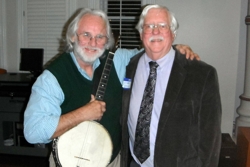 In February, 2014, Donaly Brice and I were invited to be the program for the Annual Meeting of the Friends of the O. Henry and Susanna Dickinson Museums held in the historic Maloney Room of the Main Building of St. Edward's University in Austin, Texas, celebrating the (approximately) 200th birthday of Susanna. Donaly brought fresh and revealing historical information to the assemblage, and I, armed only with my simple four-sting banjo, premiered There Must Be a Good Man in Texas.
In February, 2014, Donaly Brice and I were invited to be the program for the Annual Meeting of the Friends of the O. Henry and Susanna Dickinson Museums held in the historic Maloney Room of the Main Building of St. Edward's University in Austin, Texas, celebrating the (approximately) 200th birthday of Susanna. Donaly brought fresh and revealing historical information to the assemblage, and I, armed only with my simple four-sting banjo, premiered There Must Be a Good Man in Texas. 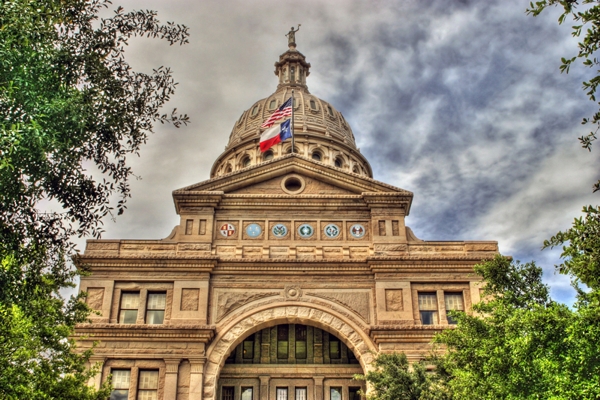
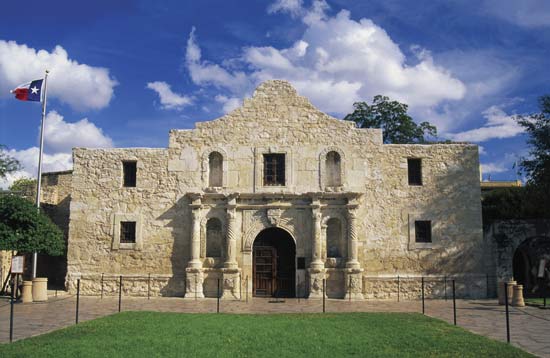 Bibliography
Misc. Historical Materials & Documents
Bibliography
Misc. Historical Materials & Documents